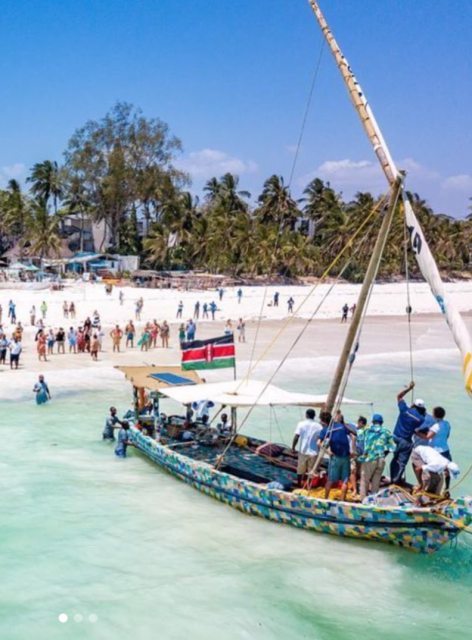Travel With Tamara | The Flipflopi Dhow
The Flipflopi Dhow
The Flipflopi dhow has now sailed from Lamu to Zanzibar. This project is close to my heart, and I've written about it frequently. Here I bring you my interview with dhow-builder Ali Skanda.

The Flipflopi Expedition has fulfilled her maiden voyage, and sailed from Lamu to Zanzibar. Created entirely from plastic waste, the Flipflopi is a world first.
Plastic pollution is clearly a crucial environmental issue. Global plastic production currently stands at 311 million tonnes annually, of which 12.2 million tonnes enters the marine environment every year. Since a third of all plastic waste is used once then thrown away, and a plastic bag takes approximately 500 years to degrade, this problem isn’t going to go anywhere fast. One million seabirds and 100,000 marine mammals die every year from plastic pollution.
Ben Morison and Dipesh Parbari, wanting to draw people’s attention to these devastating facts, came up with this innovative and daring plan. Having collected discarded and washed up plastic from Kenya’s coast, they transformed it into a traditional – yet high-tech – Swahili dhow. By building and sailing this dhow, they increased awareness of plastic pollution and inspired people around the world to campaign for taxes on single-use plastic.
Here’s my interview with Ali Skanda, the traditional boat builder responsible for bringing this plan to fruition and producing a dhow made entirely from recycled plastic.
What did you think when the team approached you?
At first I wondered how we were going to do it. But then I realised anything is possible.
How did you start?
We’re using everything, and trying everything. The next stage will be to test the dhow in the water. Inshallah, we’ll sail it to Zanzibar before the end of this year. The first challenge is to prove its strength.
Where do you get all the plastic?
We’re working with Uniquo, who have been collecting discarded plastic and sculpting it into innovative household items and ornaments for many years. We do beach cleaning together on environmental days. They’ve visited us here in Lamu and we have been to their workshop in Nairobi. I even went with Julie Church, Uniquo’s founder, to Washington DC where Julie donated some plastic sculptures and I donated my dhow to the Smithsonian, where it’s still on display.
How do you make the keel and the planks?
As well as Uniquo, a number of groups – NGOs, ladies’ groups – from along the coast are collecting up plastic from our seas and beaches and sending it to us. We send some to Malindi, where they have a melting machine and a small crushing machine, and the rest to Nairobi. Teams in those places are making the keel, the ribs and the planks.
What’s the biggest challenge you’ve met so far?
It’s tough finding the right density and strength of the ribs and planks. Every part of a boat has a different stability, and the keel needs to be the strongest part, but we’re still finding some weakness inside: some holes and some bubbles. I’ve looked at different types of plastic and I know it’s possible, but we need a professional engineer to make that calculation for us.
How have you designed the dhow?
I’m mixing the styles of the old and the new, the styles of the Lamu dhows and those from Mozambique, and I’m adding more comfort. I’m not using nails – it’s all held together with ropes and pegs. I didn’t want to simply follow traditional styles, but to make something unique using the styles that work. And I’ll cover the whole thing in multi-coloured recycled flip-flops to make it stand out on the seas.
What do you hope to prove by this?
We want to send a message to the world about how we should protect our ocean and save our lives. We need to be aware of how we’re damaging the world with plastic. If we want a smooth life and a better world, we need to handle plastic in a positive way. We have to reuse and recycle it to avoid harming the earth.
Tamara Britten, 04 February 2020
Published also in: The Link: Safarilink's inflight magazine